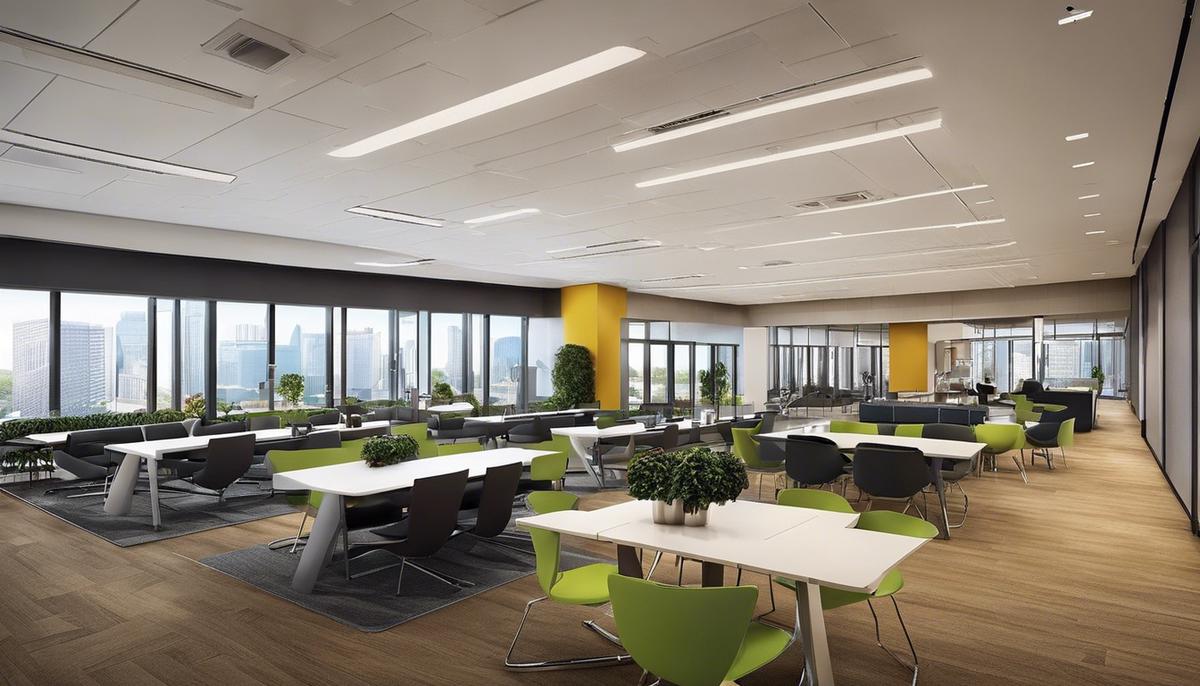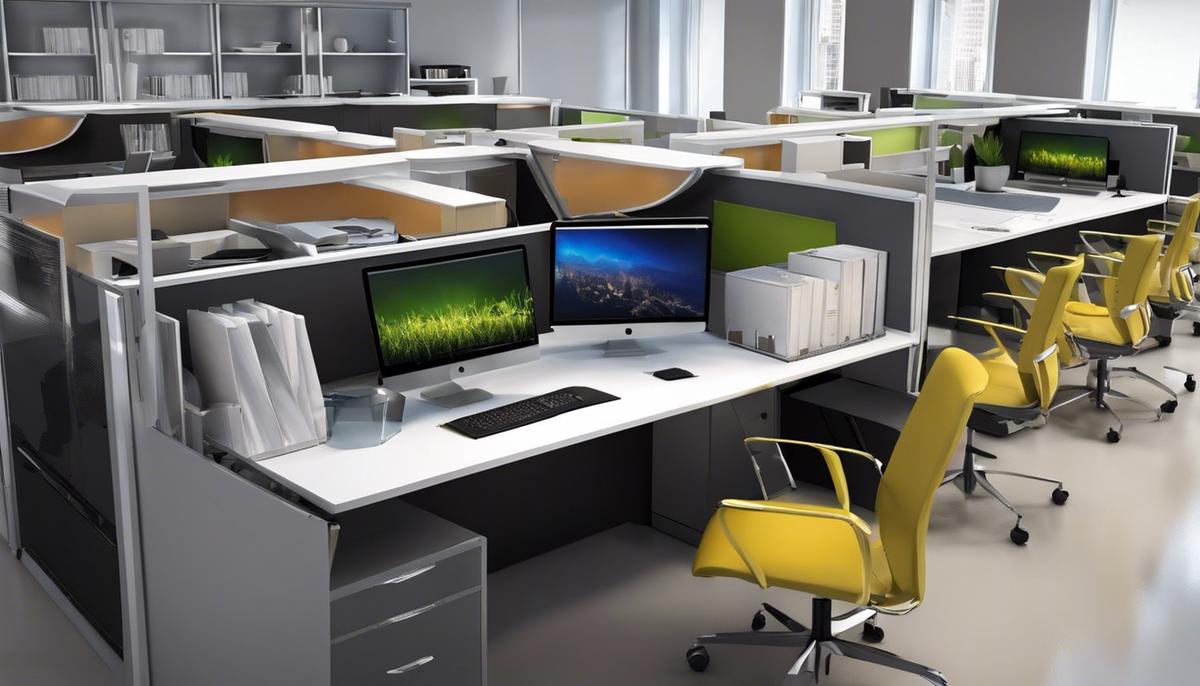In the rapidly evolving landscape of work culture and practice, productivity emerges as a core determinant of business success, significantly impacted by the environment in which it takes place. As traditional offices and home offices vie for supremacy, understanding the effectiveness of different workplaces can illuminate the path to optimal productivity. This analysis delves into the idiosyncrasies that make a specific environment beneficial for productivity, exploring issues of workplace ergonomics, noise levels, distractions, and space psychology. It further investigates the merits and drawbacks of a home office model, compared to the established structure and sociable atmosphere of traditional offices. Embedded within these discussions are the viewpoints of industry experts, the emerging trends in workspace design, and useful strategies to enhance productivity in different contexts.
Table of Contents
Ideal Environment for Productivity
Crafting the Ultimate Productivity-Inducing Environment
Keeping pace with the dynamic business world requires a high level of productivity, a virtue that is intrinsically associated with successful entrepreneurs. Creating an environment that is conducive to exceptional productivity is a fine art that blends physical ambiance with psychological stimulants. But what are the key elements that go into creating this ideal realm?
- Clutter-free and Organized Space
- Studies reveal a clear correlation between physical clutter and cognitive overload. An organized, clutter-free workspace can significantly enhance focus and productivity. A designated spot for everything eases the process of locating items and revival of forgotten tasks or deadlines. The result? Improved mental clarity and sharpness, providing the perfect platform for a soaring productivity level.
- Lighting and Ventilation
- A well-lit workspace, ideally with natural light, is a major contributor to alertness and energy. Poorly lit spaces can lead to eye strain and fatigue, causing a dip in productivity levels. Furthermore, good ventilation and indoor plants can provide a vital supply of oxygen, improving cognitive performance.
- Ergonomics and Comfort
- The physical comfort of a workspace is crucial in minimizing potential distractions. Ergonomic furniture supports good posture, reducing physical discomfort and fatigue. Adjustable desks, comfortable chairs, and monitor arms are worthy investments for creating a workspace that promotes both health and productivity.
- Noise Level
- Soft, ambient music or sounds can help in sustaining concentration and improving cognitive performance. The key is to reach a balance, where the noise level is just enough to mask disturbing sounds, but not too loud to distract the mind. Different tasks may require different noise levels, and entrepreneurs must be attuned to these demands.
- Technology Integration
- The digital era requires up-to-date technology integration for heightened efficiency. Speedy internet, cloud storage, technologically advanced gadgets, and productivity software are crucial to reduce manual work and maintain data organization.
- Color Psychology
- The colors in a workspace can influence productivity. Blues stimulate the mind, yellows inspire creativity, reds increase heart rate and energy, and green brings about calmness and steadiness. Implementing color psychology in office designs can help boost productivity.
To sum up, creating a conducive business environment isn’t just about decorating a workspace tastefully. It’s about designing a system and an ambiance that collectively provoke a high degree of productivity, while ensuring mental and physical well-being. Exceptional productivity isn’t a default setting; it’s a cultivated habit, nurtured and fostered in the right conditions.

Home Office Productivity
Unleashing Potential: The Surprising Upside of the Work-From-Home Model.
In the business world, where efficiency, productivity, and performance dictate the bottom line, the pivotal question emerges: Can the work-from-home model eclipse traditional office settings in these critical areas? This query warrants contemplation, especially as businesses pivot towards commendable solutions for the current landscape. Venturing beyond the oft-discussed factors such as clutter-free zones or tech-integration, there’s a trove of underexplored yet influential aspects worth investigating.
Firstly, let’s delve into a critical component: Autonomy. A telecommuting environment empowers individuals with the ability to manage their work schedules flexibly, ultimately fostering a higher job satisfaction rate. Studies suggest that happier employees equate to increased productivity, thus surpassing the traditional boundaries of confined office spaces.
Commute times can’t be underestimated either. In the U.S, the average daily commute is approximately 26.6 minutes, according to the U.S Census Bureau. Eradicating this burden frees up considerable time. Time that could be employed in revenue-generating pursuits, further enhancing productivity.
It’s also crucial to remember the overlooked benefit of inclusivity. The remote work model can attract a diverse and talent-rich pool of aspirants, including those constrained by geographical barriers or personal liabilities. This diversity can foster innovation, one of the key drivers of productivity. You are no longer restricting your hiring reach to a geographical circumference; the world becomes your talent pool.
Next on deck is the potential for cost savings. With significantly less office space required, businesses can reap substantial financial benefits. Money saved is money that can be reinvested to sharpen competitive edges, ramp up marketing efforts or enhance product development.
Lastly, let’s talk about health. The flexibility inherent in remote work allows for a healthier work-life balance. Having the capacity to tend to personal needs contributes to reduced stress levels, minimizing employee burnout and absenteeism, all of which are detrimental to productivity.
In conclusion, the work-from-home model packs a potent punch when it comes to productivity. Autonomy, commuting time savings, expanded talent reach, cost-efficiency, and improved health are formidable elements in reshaping the productivity landscape. Admittedly, remote work might not be a one-size-fits-all solution, but its benefits warrant serious consideration in our evolving business ecosystem.

Traditional Office Productivity
Overcoming the evolving business landscape’s hurdles and reimagining productivity, traditional office settings must adapt and innovate in unprecedented ways. To foster productive workforces, we must delve into factors beyond tangible elements like clutter-free spaces, ergonomic comfort, optimal noise levels, technology integration, and color psychology.
Social Interaction and Collaboration
A significant advantage traditional office settings have over remote is the potential for seamless social interaction. The environment lends itself to spontaneous encounters, knowledge sharing, and team-building moments, aspects often overlooked in remote work modalities. This interaction can stir creativity, accelerate problem solving, and ultimately drive innovation. Creating shared spaces, planning social events, and promoting open-door policies can lead to resilient team dynamics.
Continuous Learning and Development
Investing in training can significantly enhance productivity. However, it’s not just about formalized training programs; it’s about fostering a culture of continuous learning. Having in-person training sessions, mentorship programs, and coaching opportunities can significantly boost employees’ skills and create a culture of constant development.
Flexible work arrangements
While the traditional 9-to-5 may remain, it is paramount to incorporate flexibility. This could mean hybrid models where employees split their time between home and office or flexible hours catering to individual productivity peaks. In any case, this style respects employee independence, demonstrating trust and fostering increased job satisfaction.
Work-Life Integration
Mention work-life balance, and thoughts immediately drift towards remote work. However, this can be achieved in an office environment too. On-site amenities such as gyms, meditation rooms, or childcare facilities can significantly contribute to better work-life integration, serving employee needs while reducing external demand distractions.
Communication
Effective communication is critical to productivity, with traditional office settings enabling stronger signals through body language and tone of voice. Strategic office layouts can promote open communication, establishing an inclusive culture where ideas can flow freely.
In conclusion, fostering a productive workforce is achievable in traditional office settings. It’s just a matter of finding the right balance and integrating strategies that work best for your unique team. The future of work is evolving, and so must we. Embrace the change, take the lead, and create an environment that thrives in this rapidly evolving business landscape.

Comparative Assessment and Accessibility to Senior Management
In the current era of digital transformation, the issue of home versus office environments as the prime setup for productivity is not just timely; it’s vital, especially as businesses globally adapt to changing dynamics of work. Analytics, experience, and insights dovetail perfectly to nail down four prime factors that can drive performance and productivity.
- The first is the commitment and motivation of employees. Our work environments have a definite impact on our mood, behaviour, engagement and ultimately, productivity. If employees view their office set-up as a symbol of the company valuing their contributions, they are more likely to commit to the company’s mission and put in their best effort. However, a home setup can be just as motivating if the employee feels trusted and appreciated by the absence of micro-management.
- The second factor is cultivating a culture of innovation and creativity. This doesn’t just stem from fancifully designed open spaces in the office, or a serene setting at home. Innovation is a product of a nourishing environment, where leaders cultivate a climate of openness, curiosity and acknowledgment. Office meetings can spark spontaneous conversations leading to breakthrough ideas, while the solitude at home can cultivate focused deep-work, again fostering creativity.
- The third factor to consider is the balance between surveillance and trust. Trust plays a pivotal role in creating a family-like bond among co-workers, improving job satisfaction and reducing turnover rates. On the other hand, certain managerial styles tend towards visual confirmation of the work being done. This sense of gaze might boost performance in an office environment, while a more trust-based approach could be more productive for home setups.
- Finally yet importantly, the perks and benefits associated with each setup play a titanic role in employee happiness – intrinsic and extrinsic. In-house office perks might enthrall many employees – gym memberships, cafeteria, game zones, and regular social events. However, the perks of working from home – no commute, flexibility, and the comfort of a familiar environment, could equally outweigh the former.
To sum up, the choice between a home or office setup hinges on multiple factors – nature of work, employee’s personality, managerial style and the company culture. Choosing the right mix can lead to increased job satisfaction, collaboration and ultimately, productivity. Successfully striking this balance can unleash untapped levels of motivation, creativity, and efficiency in your workforce, proving once again that business is not a zero-sum game but an opportunity for exploration, discovery, and prosperity.

While the debate between traditional and home offices remains dynamic, the key to productivity lies not only in the given workspace but also in aligning with individual needs, task nature, and industry sector. The sophistication of the home office model, imbued with flexible boundaries and digital tools, matches well with the advantages of a traditional office that fosters networking, collaboration, and a strong work ethic. However, one may inherently work better for certain individuals or tasks. By identifying the variable factors and assessing them against evidence from surveys, industry analyses, and testimonials, businesses and individuals are better equipped to tailor their environments for maximum productivity.

Amara Rainforest is an authoritative voice in business analysis, blending her MBA in Finance insights with real-world consulting experience. She distills complex market trends into clear, actionable advice for her readers. Her engaging writing captures the essence of modern business challenges and triumphs, making her a must-follow for aspiring entrepreneurs and seasoned executives alike.

